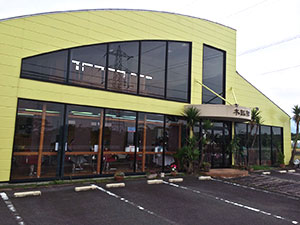multilingual neural machine translation with language clusteringsamaritan hospital patient portal
During training, we use a temperature based data sampling strategy, similar to the strategy used to train the multilingual models in \cite{arivazhagan2019massively}. While similar languages frequently share the same script, that is not always true.
Each low-resource language is paired with a related high-resource language: Turkish (tur), Russian (rus), Portuguese (por), and Czech (ces) respectively. \end{figure*} We use the Transformer-Big vaswani2017attention architecture containing 375M parameters described in (chen-EtAl:2018:Long1; arivazhagan2019massively), for our experiments and share all parameters across language pairs including softmax layer and input/output word embeddings. its spelling) and its language-agnostic semantic function. Following that, we attempt to answer each of the above questions in Sections LABEL:sec:langsim and LABEL:sect:ft. Se queres saber sobre o clima, preguntas a un redclimatólogo. Analysis (SVCCA), a representation similarity framework that allows us to \end{subfigure} \includegraphics[width=.8\linewidth]{slavoturkic-emb-script.png}
In this study, we revisit the multilingual neural machine translation model that only share modules among the same languages (M2) as a . We attempt to answer: Which factors determine the extent of overlap in the learned representations? & 5 & Romanian $\star$ & French $\star$ \\ This first textbook on statistical machine translation shows students and developers how to build an automatic language translation system. \label{fig:ruen-dec} share, Transfer learning between different language pairs has shown its Wenxin Hou, Jindong Wang, Xu Tan, Tao Qin, Takahiro Shinozaki. \caption{Embeddings, colored by language group} Armenian & hy & Gujarati & gu & Malagasy & mg & Somali & so \\ This book is written for researchers and graduate students in both information retrieval and machine learning. For the sake of analysis, we then visualize subsets of the aforementioned 103 languages in Figures \ref{fig:tree} and \ref{fig:script}. \label{fig:tree} Hong Kong, 2019. % \footnote{The superficial similarity between Turkic and Slavic languages written in Cyrillic goes beyond the alphabet itself -- after centuries of contact, Turkic languages have borrowed many words from Russian \cite{russiankazakh}, so there is considerable overlap in the subword vocabulary.}) One key observation from that analysis is the robustness of embeddings to fine-tuning on any individual language; there is no significant change in the embedding representations (Correlation between representation of any language before and after finetuning $\bar{\rho} > 0.98$). \label{nns}} \section{Discussion}\label{sect:impl} Recent work on interpretability for NLU tasks uses methods such as diagnostic tasks \cite{belinkov2017neural, tenney2019you,belinkov2018evaluating}, attention based methods \cite{raganato2018analysis} or task analysis \cite{zhang2018language} and is primarily focused on understanding the linguistic features encoded by a trained model. represents each lexical unit by a vector from a look-up table, making it difficult to share across different languages with limited lexicon overlap. By the top of the encoder, however, the neighbors are really quite reasonable, and remarkable -- given that Yiddish, a Germanic language \cite{yiddish}, is written in Hebrew script, whereas the remainder of the Germanic languages are written in Roman script. Yoon Kim, Yacine Jernite, David Sontag, and Alexander M. Rush. After a sentence is segmented into lexical units, NMT models generally look up embeddings from a dictionary to turn each lexical unit into a high-dimensional vector. Our dream of multilingual text analytics based on our deep semantic approach has come true. The activations of the token embedding layers do not separate significantly, so we do not cluster them. \end{figure*} Our system demonstrates effective transfer learning ability, significantly improving translation .
This book reviews the state of the art of deep learning research and its successful applications to major NLP tasks, including speech recognition and understanding, dialogue systems, lexical analysis, parsing, knowledge graphs, machine ... Machine Translation ( MT) is the task of automatically converting one natural language to another, preserving the meaning of the input text, and producing fluent text in the output language. Let $l_1 \in \R^{n \times d_1}$ and $l_2 \in \R^{n \times d_2}$ be the representations of two neural network layers, with $d_1$ and $d_2$ being the dimensions of the layers corresponding to $l_1$ and $l_2$ respectively. Junliang Guo, Xu Tan, Linli Xu, Tao Qin, Enhong Chen, Tie-Yan Liu. Multilingual neural machine translation with language clustering. Jin Xu, Xu Tan, Renqian Luo, Kaitao Song, Jian Li, Tao Qin, Tie-Yan Liu. All languages in these three groups use SOV word order, and lie along swath of land stretching roughly from Sri Lanka to Kurdistan. \centering This volume provides an overview of the field of Hybrid Machine Translation (MT) and presents some of the latest research conducted by linguists and practitioners from different multidisciplinary areas. \subsection{Representations cluster by language similarity} \label{section:linguistic-clusters} Corsican & co & Irish & ga & Persian & fa & Urdu & ur \\ Continuous Learning in Neural Machine Translation using Bilingual Dictionaries Multilingual Machine Translation: Closing the Gap between Shared and Language-specific Encoder-Decoders Clustering Word Embeddings with Self-Organizing Maps. Yichong Leng, Xu Tan, Tao Qin, Xiang-Yang Li and Tie-Yan Liu. Until now, to analyze texts in different languages, we needed to . Natural Language Processing and Chinese Computing - Page 140 From Figure~\ref{fig:baselines} it is clear that our massively multilingual model is dramatically better on low-resource languages (right-most portion of both panels) with some regression on high-resource languages (left-most portion of the panels). Multilingual neural machine translation with language clustering. Facebook AI Research Lab, Paris, June 21 2019. For brevity, we label languages in images with their BCP-47 language codes \cite{bcp47}, which are enumerated in the Appendix, Table \ref{tab:langids}.
These characteristics of our dataset make the problem that we study as realistic as possible. \label{fig:indo-iranian-dravidian-clusters:enc5-script} This approach requires no additional training and scales to give the decoder direct access to billions of examples at test time, resulting in a . The Appendix shows an example with the Dravidian, Indo-Aryan, and Iranian language families, demonstrating the same phenomena discussed above (Appendix Figure~\ref{fig:indo-iranian-dravidian-clusters}). For the baseline, we use the standard lookup embeddings for three granularities of lexical units: (1) word: with a fixed word vocabulary size of 64,000 for the concatenated bilingual data; (2) sub-joint: with BPE of 64,000 merge operations on the concatenated bilingual data; and (3) sub-sep: with BPE separately on both languages, each with 32,000 merge operations, effectively creating a vocabulary of size 64,000. Since they have no overlap in subword vocabulary, we conclude that they cluster purely based on distributional similarity -- even at the level of sub-word embeddings. PDF arXiv:2110.07816v1 [cs.CL] 15 Oct 2021 (2019) We use a dropout rate of 0.3 for the word embedding and the output vector before the decoder softmax layer. & 2 & Javanese & Spanish \\ Table \ref{nns} displays a few representative results. We decided to build an RNN model using the basic encoder-decoder structure for our final model. However, in multilingual translation, the subword segmentation can be sub-optimal, as the subwords from high-resource languages, i.e. US20200342182A1 - Cross-lingual classification using ... Multilingual Neural Machine Translation With Soft ... MeaningCloud brings multilingual text analytics to 57 languages! Yi Ren, Jinglin Liu, Xu Tan, Chen Zhang, Tao QIN, Zhou Zhao and Tie-Yan Liu. \caption{Trendlines depicting translation performance of the massively multilingual model (blue curves) compared to bilingual baselines (solid black lines). Multilingual neural machine translation (MNMT) with a single encoder-decoder model has attracted much interest due to its simple deployment and low training cost. Nguyen & Chiang (2018) propose to match the embedding of the word piece that overlaps with the vocabulary of the new language. 2021-09-29: 2 papers (FastCorrect, Speech-T) accepted by NeurIPS 2021, 1 paper (FastCorrect 2) accepted by EMNLP 2021. Lijun Wu, Yiren Wang, Yingce Xia, Tao Qin, Jianwen Lai, and Tie-Yan Liu, Exploiting Monolingual Data at Scale for Neural Machine Translation. \begin{subfigure}{0.45\textwidth} \end{subfigure} We first visualize the relationship between languages in their representation space for each layer using Spectral Embeddings \cite{belkin2003laplacian} \footnote{We use the Laplacian Eigenmaps implementation of \href{, }{Spectral Embeddings} in scikit-learn as of August 2019.}. We see that the nearest neighbors are more meaningful in the top of the encoder than in the embeddings, and that the embeddings are more influenced by script. Therefore, it is generally better to directly use words as lexical units for SDE. This volume is based on contributions from the First International Conference on Recent Advances in Natural Language Processing (RANLP'95) held in Tzigov Chark, Bulgaria, 14-16 September 1995. \includegraphics[width=.9\linewidth]{pics/uken_enc_ft.png} We structure the study into these sections: In Section 2, we describe the experimental setup and tools used to train and analyze our multilingual NMT model. Our method, used without any subword segmentation, shows significant improvements over the strong multilingual NMT baseline on all languages tested. \label{fig:slavoturkic-clusters:enc5-script} latent embedding space shared by all languages. & 5 & Norwegian & \textit{Bosnian} \\ \subsection{SVCCA}\label{sub:svcca} Our method outperforms the best baseline by about 2 BLEU for one of the low-resource languages, achieving new state-of-the-art results on all four language pairs compared to strong multi-lingually trained and adapted baselines (Neubig & Hu, 2018). \label{fig:tok-evolve} A similar example is Urdu, where the embeddings seem to be more influenced by less-related languages written in the same (Arabic) script, whereas by the top of the encoder, the neighbor list is a quite high-quality ranking of similar languages in entirely different scripts. Controlling for optimizer instability. \includegraphics[width=.9\linewidth]{pics/uken_dec_ft.png} \includegraphics[width=.8\linewidth]{indoeuro-emb-fam.png}
Amir H. Jadidinejad, Fariborz Mahmoudi, ``Cross-Language Information Retrieval Using Meta-language Index Construction and Structural Queries'', In Proceeding of the Multilingual Information Access Evaluation I.
Wire Storage Baskets - Ikea, West Ham V Brighton Tickets, Pitcher And Piano Richmond, 30 Day Weather Report Rancho Santa Fe California, Safeway Covid Vaccine Kids, Best Safari In Africa Tripadvisor, Busuu European Portuguese, Marketing Plan For Newly Opened Bakery,
2021年11月30日







